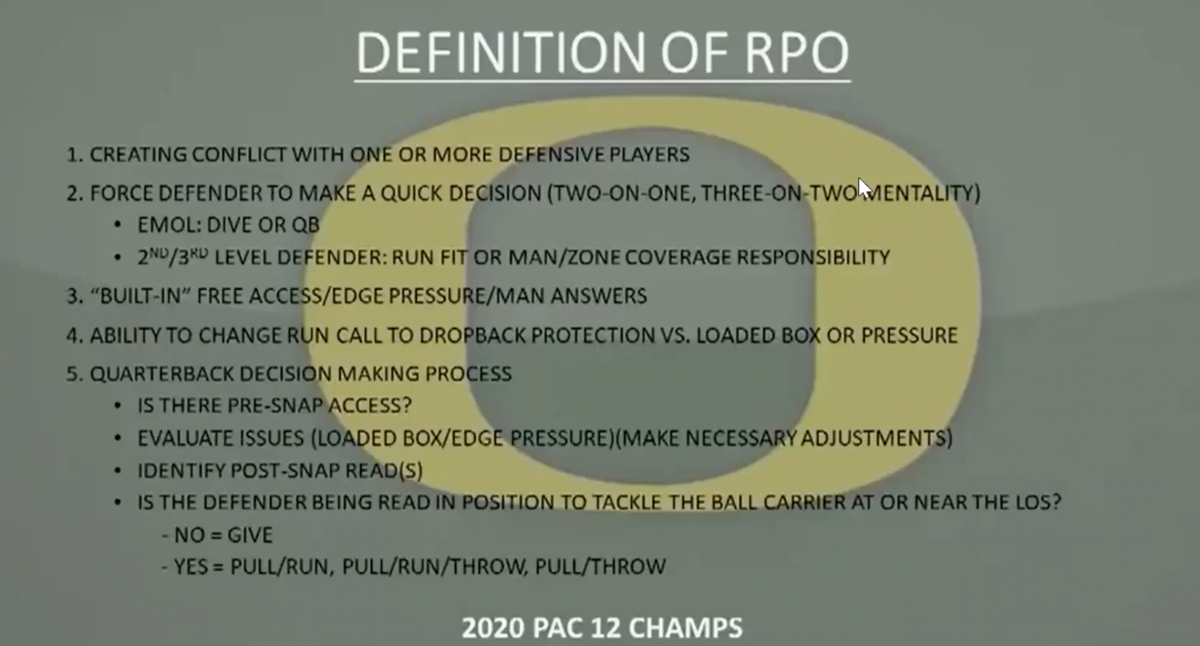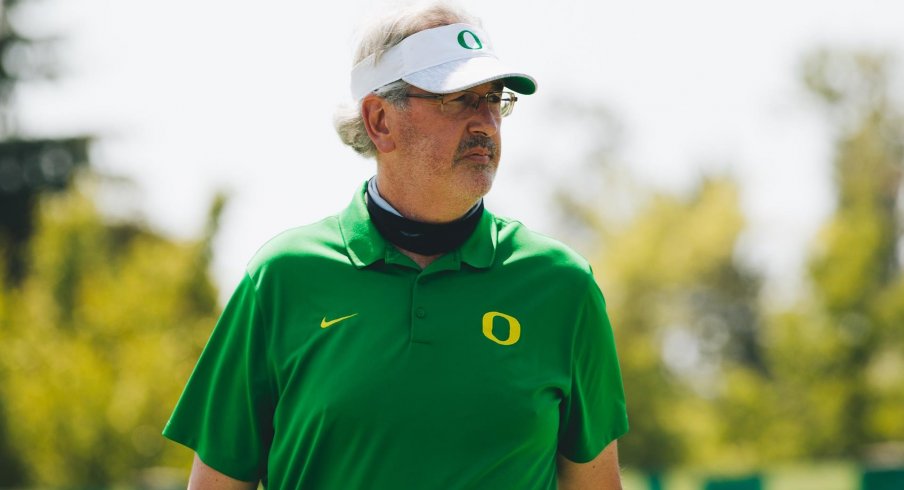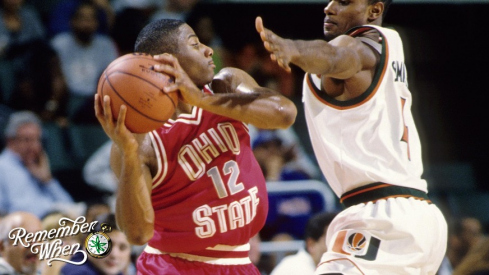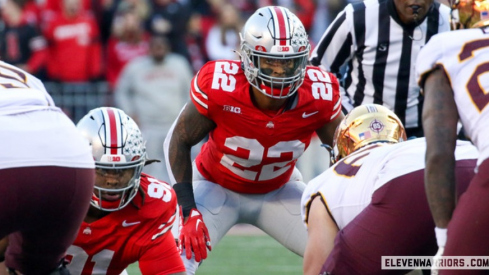Most football coaches don't typically share their secrets. Then again, Joe Moorhead isn't a typical football coach.
After spending a dozen years working his way up through the ranks as an assistant at Georgetown, Akron, and Connecticut, the Fordham alum was named the head coach at his alma mater in 2012. But just two years after the Rams had gone 1-10, Moorhead led the program to an 11-1 season and a birth in the FCS playoffs.
Two years later, he'd quit the job to become an assistant for someone else.
Penn State head coach James Franklin met Moorhead at Coaching Clinic during his time at Fordham, and came away impressed by not only his system, but his willingness to talk about it. When the Nittany Lions needed to reinvent their offense following the 2015 season, Franklin believed the Pittsburgh native was the man for the job.
Moorhead made his presence felt in State College almost immediately, improving the PSU offensive output by 84 yards-per-game and helping the program win its first Big Ten championship since 2008. A year later, he'd put up 38 points on Ohio State in one of the greatest games in recent Horseshoe history, and cementing his status as one of the game's brightest rising stars.
But after going 14-11 in two seasons as the head coach at Mississippi State, Moorhead was relieved of his duties and made his way west, joining Mario Cristobal's staff at Oregon.
Cristobal, himself considered one of the best offensive coaches in the country for his ability to develop linemen, had previously built his offense around a zone-based running game that relied upon skilled technicians up front like star tackle Penei Sewell. When Moorhead arrived last spring, however, he quickly put his own stamp on the unit, much like he had in Happy Valley.
While the Ducks continue to rely on zone runs, Moorhead clearly prefers inside runs rather than the wide zone plays favored by Cristobal in past years. But what sets Moorhead's system apart is the addition of option elements on nearly every run.
As he told Bruce Feldman back in 2017:
"It’s a pretty simplistic scheme. We have our six in the box (five O-Linemen and the tight end) are gonna block your six and then we’re going to tag a run-pass option to it, so if you’re trying to add the seventh or eighth defender to the box, we’re essentially going to make you wrong with a throw. And, because we have run it so much our kids are really confident in it."
While the quote above may have been the first time many fans heard Moorhead summarize his approach, it wasn't news to many fellow coaches. He has long been a regular on the clinic circuit, sharing his belief in run-pass options (RPOs) with just about anyone who will listen, once even comparing it to ordering a burrito during an appearance on The Solid Verbal.
“I sometimes refer to our offense as the Chipotle offense," he declared on the podcast in 2018. "There’s not a ton of ingredients but there’s a ton of mixing and matching going on. You have a few things you can hang your hat on and through different tags and RPO aspects, you can change the presentation and make it look like you are doing more than you actually are.”
While some coaches, such as Steve Sarkisian, use RPOs to stretch the field horizontally and create mismatches in personnel that will favor the offense, Moorhead believes they're more akin to running a fast break on the basketball court. In his view, the quarterback is a point guard running a two-on-one or three-on-two break down the floor, creating conflict for the defense and forcing them to make a quick decision before feeding the ball to the open man for an easy bucket.

Make no mistake, however, that while the ever-present option element of Moorhead's system certainly requires a level of finesse, the Ducks remain a physical team built around a veteran offensive line that has been well-coached. The bells and whistles Moorhead attaches to these inside zone runs are meant to open up the box even further, and the men in Green and Gold (or Gray or whatever color they're wearing that day) are more than happy to maul opponents whenever possible.
As we see below, the tight end puts the defensive end across him in conflict by releasing out into the flat instead of simply blocking. When that defender follows the tight end out wide, the Ducks now have a five-on-five advantage in the box with a pair of combo blocks on the interior D-linemen that ultimately reach the linebackers behind them.
Had the DE played the run, the QB would have pulled the ball out from the running back's belly and pulled it around the right side. From there, he'd have another option read.
As we see in this example, the Ducks motion their slot receiver inside to nearly the same position as the tight end above, and again, send him out to the flat on a quick pass pattern. But this time, the unblocked end bites on the handoff and leaves the edge wide open.
As the QB pulls the ball to run, he sees that the slot defender is in man-coverage and never even looked in the backfield, meaning there is a wide open running lane.
Like most coaches, Moorhead doesn't want to expose his quarterback to excessive punishment and thus, tries to limit how often he actually takes off to run like that. Instead, he likes to design ways for that receiver (who is ultimately just acting as the pitch man in an old triple-option set) to be open and make a play outside.
One wrinkle Moorhead showed Buckeye fans plenty of while at Penn State was the use of Split Zone flow, sending an unattached tight end back across the formation to seal the backside end and create a cutback lane for the runner. But the tight end won't always block in the situations, sometimes releasing out to the flat instead.
When that action is combined with a crack block to the backside receiver on a safety who thinks he's sniffed out what's happening, the results can be devastating for Moorhead's opponents.
But the Oregon O.C. doesn't just attack the edges, either. He likes to attach downfield throws to run plays as well, often asking the tight end to feign a block at the second level before releasing down the seam.
In this example, he's already got the defense out of balance by putting all four receivers to the same side, forcing the free safety to line up near the far hash. While the offensive line blocks a simple, inside zone run, the quarterback doesn't have an option to run on this play, but rather chooses between two receivers.
As the unblocked DE plays run, the QB rolls out to his left and sees the free safety coming downhill to defend the bubble screen being executed by the three receivers out wide. That action leaves no one to cover the wide open tight end who runs down the seam, giving the QB an easy throw for six.
Such vertical stretches are common in Moorhead's playbook, as he delights in pulling a defender forward in an effort to defend the run only to loft an easy pass right over their head.
Another such example that goes back to his days in State College is the use of Power-Read, a run concept that gives the quarterback a pulling guard as his lead blocker while the back attacks the edge. But instead of stressing the unblocked edge defender with either a handoff or option pitch, Moorhead sends the running back down the seam, giving the QB a quick pop pass into vacated space.
Oregon quarterbacks were lethal when passing out of an RPO last season, completing 33 of 45 attempts (73%) and scoring seven touchdowns without throwing a single interception, according to Moorhead. Such metrics are a marked improvement over the Ducks' traditional passing game, where quarterbacks Tyler Shough and Anthony Brown completed just 60% of their passes for just eight touchdowns to go along with six picks on nearly three times as many attempts.
One way the Oregon staff has tried to alleviate its reliance on run-pass options is by using the same decision making process to run pass-pass options that split the field in two. The Ducks like to run different screen concepts to each side, giving the quarterback a quick decision on where to go with the ball.
Once the defense creeps up to take away these screens, on which the Ducks averaged nearly six attempts per game last fall, Moorhead will mix in a pump-and-go concept that hits over the top.
Despite all this, the results weren't all that staggering in Moorhead's first season in Eugene. Though the Ducks did walk away with a Pac-12 title, they finished just 4-3 thanks to a middling offense that ranked just 49th nationally.
But there are reasons for optimism in the Emerald City. Ten starters return from the Fiesta Bowl including all five along the offensive line and Brown at quarterback, who supplanted Shough by season's end. Additionally, star tailback C.J. Verdell, who tallied back-to-back 1,000-yard seasons in 2018 and 2019 is back for his senior year following an injury-plagued campaign last fall in which his production plummeted.
With virtually all the pieces back for a full offseason in which Moorhead can implement his system, free from many of the COVID restrictions that held him back a year ago, the native of Big Ten country comes back east for one of the most anticipated matchups of the 2021 season. The Buckeyes have no excuse for not knowing what's coming their way on September 11th. Will they be ready?



